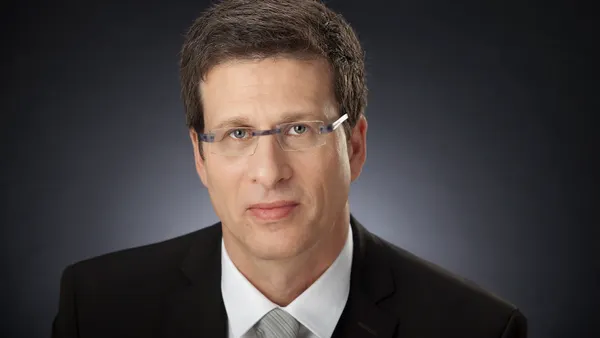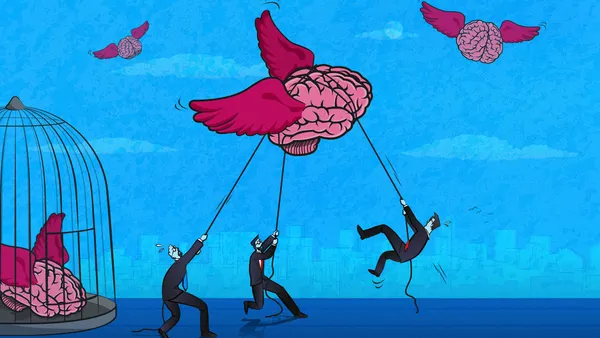When the CEO of a major pharmaceutical company steps down, the transition often comes at a time of reinvention. While many factors play into a decision to shuffle the C-suite, Big Pharma has seen turnover in the last few years as a result of looming patent cliffs, shifting competitive landscapes or poor financial performance.
Novo Nordisk announced last week that CEO Lars Fruergaard Jørgensen would step down from the Danish drugmaker, which is conducting a search for his replacement. With years of outsized performance around the company’s GLP-1 diabetes and weight loss medications Ozempic and Wegovy, Jørgensen’s ouster came as a surprise.
But that success became less potent compared to rival drugmaker Eli Lilly, whose own GLP-1 drugs, despite being second to market, have begun to outshine Novo’s first-mover status. Specifically, Novo cited “recent market challenges Novo Nordisk has been facing, and the development of the company's share price since mid-2024” for the CEO’s ouster, according to a statement.
The leadership move also coincided with the first sales and profit guidance cut in four years, when Wegovy launched on the market, according to a Reuters report. Wegovy prescriptions fell below those of Lilly’s Zepbound this year for the first time.
Of the top pharma companies by market cap, several have undergone CEO changes in the first half of this decade, usually accompanied by other major shifts in the company dynamic, particularly with regard to loss of market exclusivity, underperforming brands and competitive behavior. Here’s a look at three notable CEO transitions within the last five years and what happened at their companies as they made the move.
Johnson & Johnson
During the decade J&J CEO Alex Gorsky was at the helm, he was credited with making it the largest healthcare company in the world, which included closing a fundamental $30 billion deal in 2017 that brought Actelion into the mix and boosting R&D, particularly in oncology.
But when Gorsky stepped down in 2022 and passed the torch to Joaquin Duato, the company was changing rapidly. At the time, all eyes were on J&J’s next move as it dealt with the spinoff of its consumer health unit, a major upcoming patent cliff and a transformational M&A docket.
With the immunological powerhouse drug Stelara coming up on a U.S. patent loss this year, Duato has remained steadfast in his forecast for sales growth. And the company’s track record of large acquisitions, which this year included a $14.6 billion deal for mental health drugmaker Intra-Cellular Therapies, has helped keep the pipeline fresh.
AbbVie
Former AbbVie CEO Richard Gonzalez left a lasting impact at the U.S. drugmaker when he stepped down last year and was replaced by current CEO Rob Michael. The company’s megablockbuster drug Humira led the immunological space for years before hitting the skids in 2023 when biosimilar competition entered the arena. Until that point, it had been the bestselling drug in the world for years.
AbbVie’s quick rise to dominance on the back of Humira allowed Gonzalez to change the face of the company again in 2020 with the $63 billion acquisition of Botox maker Allergan.
Now, his successor is driving the train that Gonzalez built, maintaining a focus on immunological newcomers Rinvoq and Skyrizi, which have also quickly become blockbusters.
Merck & Co.
Merck’s longtime CEO Kenneth Frazier, who spent almost 30 years at the drugmaker and 10 years in the top seat, stepped down in 2021 to hand the keys over to then-CFO Rob Davis. In those three decades, Frazier changed the company’s course to become an oncology juggernaut centered around the blockbuster cancer drug Keytruda.
When Frazier departed the role, Keytruda represented more than a third of Merck’s overall sales. Now, Keytruda’s share has become almost half, making a 2028 patent expiration a critical juncture for the company. As Merck turns the page on Keytruda in the next few years, Davis has focused on M&A and new formulations to fill the pipeline, but investors are still wary of what a post-Keytruda future looks like.










